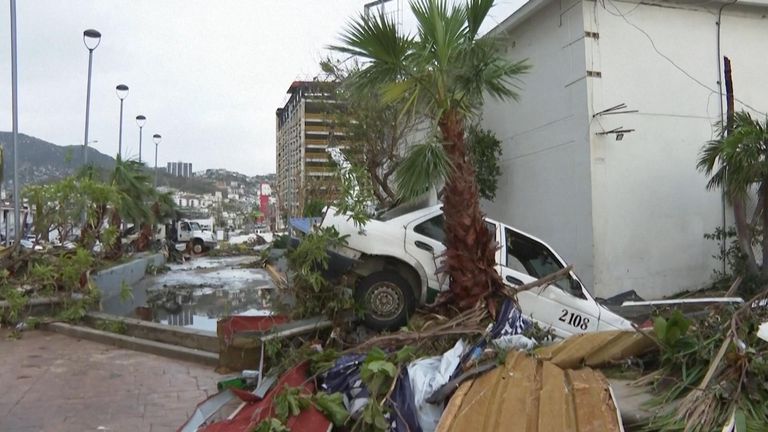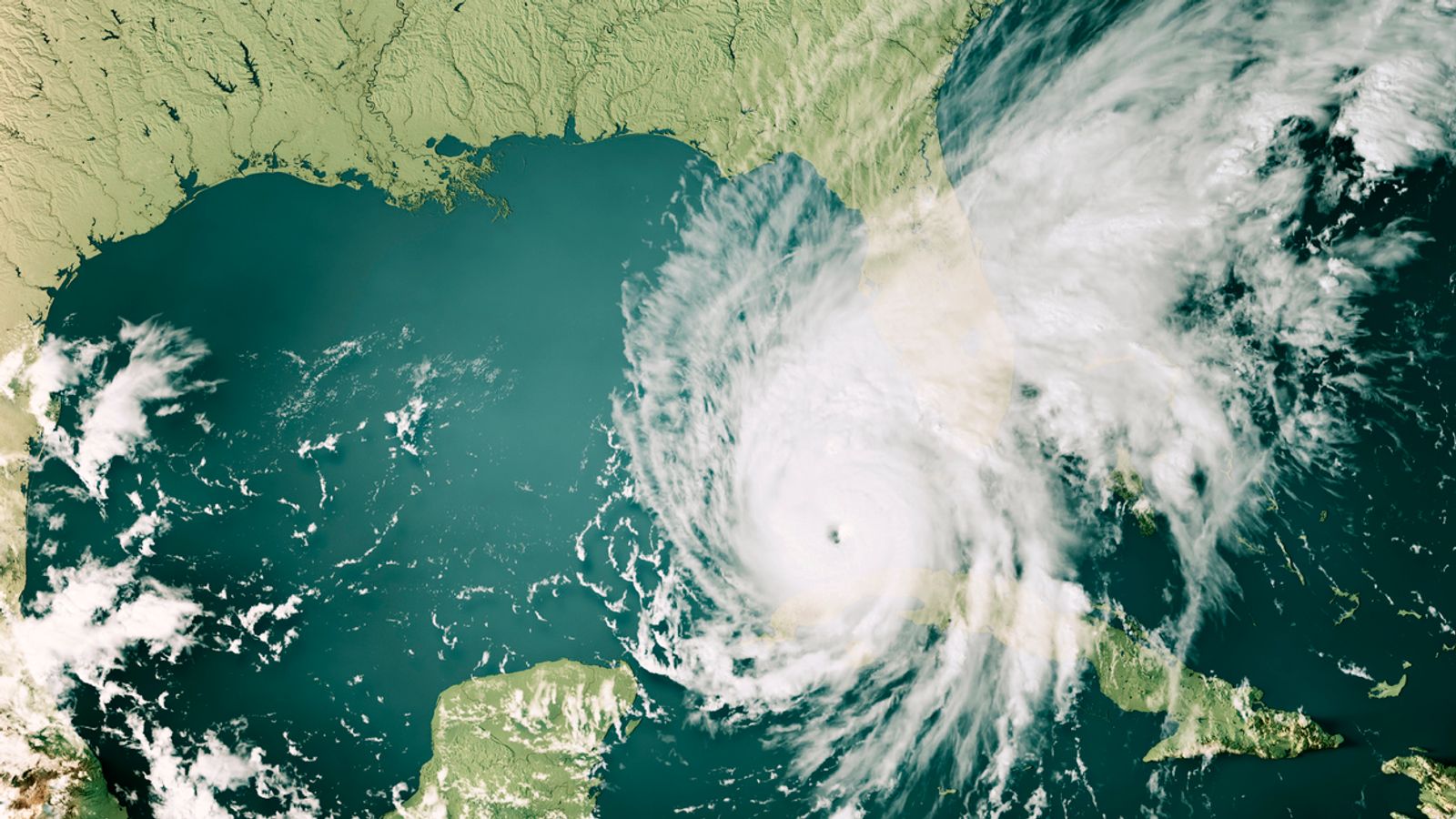Hurricanes becoming significantly more intense due to climate change requires a new category six classification, a new study has warned.
Currently, the Saffir-Simpson hurricane wind scale measures a hurricane’s maximum sustained wind speed.
Introduced in the 1970s by the National Hurricane Center (NHC) in the US, it ranges from one to five, the lowest number covering 74-95mph winds and warning of some damage and the highest number predicting “catastrophic” damage with winds measuring 157mph or higher.
Please use Chrome browser for a more accessible video player

0:40
October 2023: Hurricane Otis hits Mexico’s east coast
But a new study published in the Proceedings of the National Academy of Sciences has proposed a hypothetical category six hurricane as a result of “record wind speeds” due to the planet warming.
Authors Michael Wehner and James Kossin criticised the Saffir-Simpson scale for being too “open-ended” which can lead to an underestimation of risk.
Instead, the study recommends extending the requirements for a category five hurricane to cover wind speeds of 157-192mph, with the new category six for winds greater than 192mph.
Referring to hurricanes as intense tropical cyclones (TCs), the study said: “We investigate considering the extension to a 6th category of the Saffir-Simpson hurricane wind scale to communicate that climate change has caused the winds of the most intense TCs to become significantly higher.”
Read more from Sky News:
King Charles’s cancer was ‘caught early’
Ukraine-born Miss Japan winner hands back crown
It reported that in the past decade, five storms have exceeded the proposed category six range, including Typhoon Haiyan, which hit the Philippines in 2013, bringing winds of 195mph, and Mexico’s Hurricane Patricia in 2015.
“192mph is probably faster than most Ferraris, it’s hard to even imagine,” Mr Wehner, a scientist at the Lawrence Berkeley National Laboratory, said, according to The Guardian.
Mr Kossin, of the University of Wisconsin-Madison, added: “Being caught in that sort of hurricane would be bad. Very bad.”
Scientists have previously warned that climate change is making extreme weather events more frequent and severe. This includes hurricanes and storm surges – a rise in sea level caused by wind and atmospheric pressure changes.
Spreaker
This content is provided by Spreaker, which may be using cookies and other technologies.
To show you this content, we need your permission to use cookies.
You can use the buttons below to amend your preferences to enable Spreaker cookies or to allow those cookies just once.
You can change your settings at any time via the Privacy Options.
Unfortunately we have been unable to verify if you have consented to Spreaker cookies.
To view this content you can use the button below to allow Spreaker cookies for this session only.
Click to subscribe to ClimateCast with Tom Heap wherever you get your podcasts
In 2022, Hannah Thomas-Peter, Sky News’ climate change and energy correspondent, explained that more heat means more evaporation, which means more moisture in clouds and therefore more intense rainfall.
An increase in ocean temperatures can also make hurricanes more powerful, as the heat from the surface of the water transfers energy to the storm as it heads towards land.
However, there is no clear consensus on whether global warming is currently having any measurable impact on tropical cyclones, according to the Met Office.












Post comments (0)